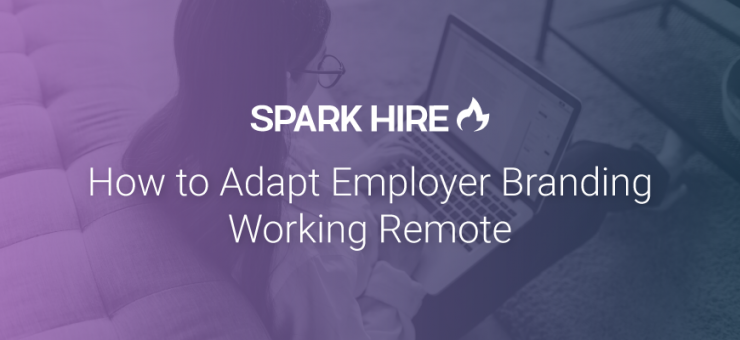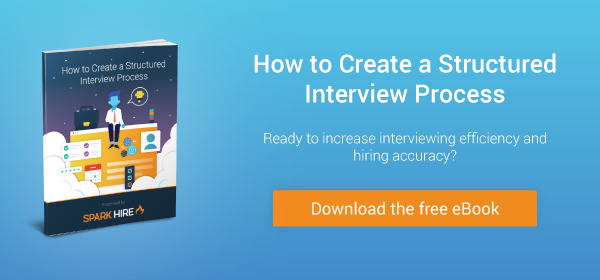Not long ago, an open office space with ping pong tables and relaxation stations were must-have perks to attract employees to your company.
With many businesses switching to remote work this year, fun workspaces and happy hours aren’t worth as much to job seekers. In fact, according to a 2020 study from Topia, having an “amazing” office space and perks is a priority to only 16% of workers.
Instead, job seekers are looking for signs of empowerment and trust. According to the survey, these are the top values since 2020, followed closely by training, job rotation, or international assignments.
These changes in job seekers’ expectations mean you need to ensure your company prioritizes the values job seekers want. More importantly, you need to incorporate them into your employer branding during the recruiting process.
Values Your Company Must Prioritize
Empower and trust your employees
Nearly 60% of job seekers want companies to make them feel empowered and trusted, according to the Topia survey. The simplest way to do this is to allow your employees autonomy when they’re working remotely.
Patagonia is an excellent example of a company doing this right. According to Forbes, Patagonia requires autonomy and time away from the office. Employees get time to head out into the great wide open to surf, bike, climb, etc.
Their employer branding aligns with their consumer branding in this way. Additionally, employees get flextime to take classes, spend time with their kids, or whatever else they might need.
Flexibility and employee empowerment are even more important amid the current pandemic. Families are shut in and schedules are turned upside down. You need to trust your employees to get the job done, even if balancing their personal lives does away with the traditional 9-to-5 schedule.
As a result of Patagonia’s offerings, they boast high employee engagement, morale, loyalty, and retention. Your company can see these benefits as well by encouraging trust and autonomy across your teams.
Allow your employees to grow
In addition to these values, you must also prioritize your employees’ growth to earn their satisfaction. According to the Topia survey, 48% of job seekers say their ideal companies offer training, job rotation, or international assignments.
The good news is there are dozens of ways to help your employees grow, even when they’re working remotely.
To start, if you have the resources, your company can offer regular training opportunities in both the hard skills and leadership skills your employees will need as they move up in the company. If you don’t, you can also outsource this training by bringing in qualified trainers.
Another way for employees to gain new skills is through other educational opportunities. For example, you can offer education reimbursement for your employees to pursue new degrees or certificates. Additionally, you can reimburse the cost for your employees to attend webinars, conferences, or other forms of online learning.
Aside from strictly educational offerings, you can also create hands-on experiences to help your employees grow within your organization. For example, you might offer rotation programs to existing employees to learn new areas of the company. Or you could allow select employees to participate in internal stretch assignments to help them try something new with the security of their old role if they don’t like it.
Especially in a year where promotions are more uncertain than average, these types of growth opportunities are essential to keeping your employees happy. Work with your leadership team to determine the best combination for your company.
Put people first
The last value that you should focus on in a remote setting is to put people first. This goes for both your customers and employees. People want to work for companies that treat their customers (and employees) like people, not just a means to a profit.
For example, during the pandemic, Delta put rules in place to keep the seat next to every passenger open, and they were the first to remove passengers for refusing to wear masks. By prioritizing the safety of passengers and employees, Delta showed that they prioritize people over profits.
Think about the ways this concept applies to your business. Identify where you have opportunities to show the importance of your employees’ well-being over anything else. The profits will come naturally when customers see your values.
How To Showcase These Values In Your Employer Branding
Once you understand the values to prioritize, the next step is to make sure job seekers know about them. Don’t worry! You don’t have to redo your website or produce fancy videos to make a difference.
There are plenty of cost-effective ways to update your employer branding right now. Here are a few tactics to consider:
Update your job descriptions
This is a given, but there is a critical update you may be missing. Most often, a job seeker’s first point of contact with your career site will be the page with a job description. Your job openings are posted on job boards and aggregator websites, so when a candidate clicks apply there, it takes them to your application page. This means they skip past anything on your website that talks about your culture, so it’s essential to have all of the key information in a place where they’ll see it.
Highlight your culture and benefits right in the job description. Talk about how your company empowers and trusts employees, how you offer growth and development, and value people first. A few sentences in the job description can make all of the difference to encourage a job seeker to click, “Apply.”
Create authentic videos
You don’t have to create fancy videos, but simple, authentic, and inexpensive employer branding videos can go a long way with a potential candidate. All you need to do is have your company’s leaders talk about what the company values mean to them and how they apply to their teams.
One way you could accomplish this is to ask managers and employees to submit videos they record on their mobile devices at home. You could also record a video meeting where different employees chime in with their thoughts. After collecting the footage you need, there are several free video-editing applications you could use to piece together a final product.
Once you’ve got some authentic video content, you can use it in many places to enhance your employer branding. For example, embed it into your career site’s homepage, into the job descriptions themselves, or on your LinkedIn profile.
Take it a step further by recording intro and outro videos specifically for your video interviews or the “thank you” page after your job applications. Every little bit of personality helps when building an authentic employer brand.
Change up your interview questions
Your employer branding doesn’t stop once a candidate applies to your job. It needs to carry all the way through the hiring process. Incorporate those key values into your interview questions. This will help show candidates what you value and narrow down job seekers who will fit into your culture.
To make potential employees feel empowered and trusted, ask questions about the candidate’s experience with autonomy and independent assignments:
- Tell me about a project you managed from start to finish. What was the outcome?
- We trust our employees to arrange their work schedules to accomplish their work independently, even if they need flexibility with their days. Can you tell me about a time when you juggled competing priorities, and how you got everything done?
To show that you value employee growth, ask questions about long-term goals, and how they like to grow in a job.
- Tell me about a time when a job required you to learn a new skill quickly. How did you accomplish your goal?
- What are your long-term career goals? How do you imagine your ideal manager will help you accomplish them?
To show that you put people first, ask questions to get to know the individual outside of the job requirements.
- What is something that brings you joy outside of your work?
- Teach me something new. What is something you’re an expert on that has nothing to do with this job?
Implement an email campaign
After the hiring process is over for a particular role, you’re often left with great candidates who just weren’t the perfect fit for the specific job opening. That doesn’t mean they won’t be right for other jobs at your company. It’s essential to keep in touch with those “silver-medalists,” so they feel encouraged to apply to future openings.
You can do this by setting up an email campaign. Reach out every few months to those candidates you want to keep warm for the future. Share the videos you created that talk about those core values, update them on the latest company news, and share links to jobs to which you want them to apply.
Whether you plan to stay remote in the long-term, or it’s just temporary, it’s critical to keep aligned with your ideal job seekers’ values. By ensuring all of these touchpoints reflect the same fundamental values throughout the candidate’s experience, your employer branding will continue to attract top talent.












